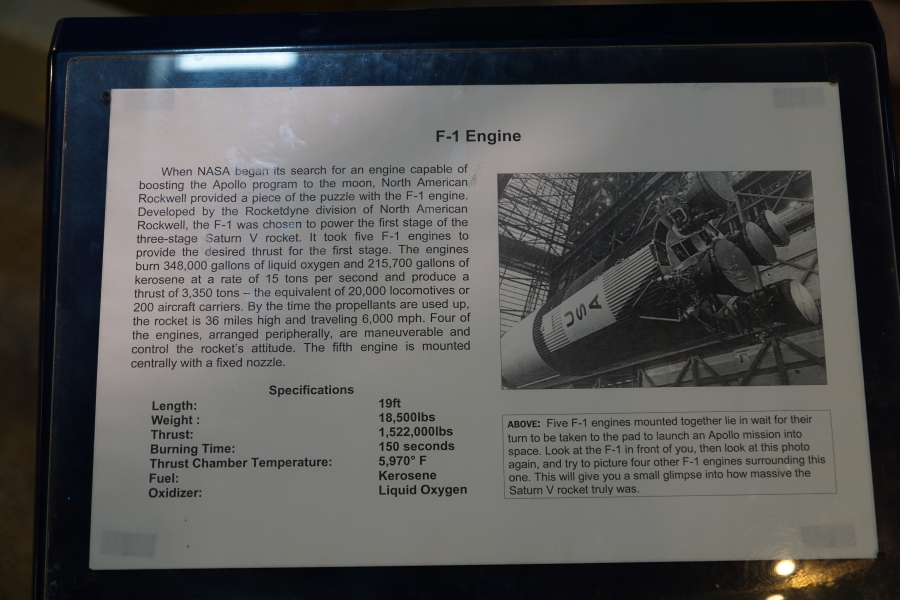| Prev |
heroicrelics.org Science Museum Oklahoma Site Index F-1 Engine Gallery |
Next |
dscc3885.jpg
A sign accompanying the engine. It reads
F-1 Engine When NASA began its search for an engine capable of boosting the Apollo program to the moon, North American Rockwell provided a piece of the puzzle with the F-1 engine. Developed by the Rocketdyne division of North American Rockwell, the F-1 was chosen to power the first stage of the three-stage Saturn V rocket. It took five F-1 engines to provide the desired thrust for the first stage. The engines burn 348,000 gallons of liquid oxygen and 215,700 gallons of kerosene at a rate of 15 tons per second and produce a thrust of 3,350 tons - the equivalent of 20,000 locomotives or 200 aircraft carriers. By the time the propellants are used up, the rocket is 36 miles high and traveling 6,000 mph. Four of the engines, arranged peripherally, are maneuverable and control the rocket's attitude. The fifth engine is mounted centrally with a fixed nozzle.
Specifications Length: 19ft Weight: 18,500lbs Thrust: 1,522,000lbs Burning Time: 150 seconds Thrust Chamber Temperature: 5,970° F Fuel: Kerosene Oxidizer: Liquid Oxygen [Photo caption] Five F-1 engines mounted together lie in wait for their turn to be taken to the pad to launch an Apollo mission into space. Look at the F-1 in front of you, then look at this photo again, and try to picture four other F-1 engines surrounding this one. This will give you a small glimpse into how massive the Saturn V rocket truly was.

| Time picture taken | Sun Apr 10 16:14:16 2016 |
| Location picture taken |
Open-Air Exhibit Gallery Science Museum Oklahoma (formerly the Omniplex) Oklahoma City, OK |
| Prev |
heroicrelics.org Science Museum Oklahoma Site Index F-1 Engine Gallery |
Next |